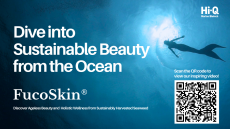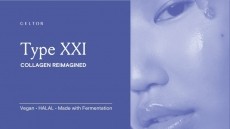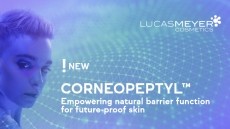University of Southampton seminar to focus on skin health

The event will be held at the Institution of Mechanical Engineers in London on 25 November, with a focus on the cosmetics, medical device, pharmaceutical, sport equipment and military sectors.
According to the University of Southampton, the presentations will showcase the latest techniques and tools used to accelerate research and product development.
Talks will include how microclimate factors influence the integrity of the loaded skin interface by the University's Professor Dan Bader and a exploration of how modelling techniques are used to elucidate the complex mechanics of the skin, by Dr Georges Limbert.
Dr. Steve Franklin will also look at how to tackle current challenges in personal care device development.
Sneak peak at the programme..
Predictive modelling of the static and dynamic friction behaviour of human skin
Dr. Marc Masen, Department of Mechanical Engineering, Imperial College
• Friction and the Prevention of Decubitus Ulcers
• Modelling & Measuring Friction of the Human Skin
• Relation Contact, Friction & Experience
Understanding the generic influence of moisture on the friction of skin from the contact mechanics of the finger pad
Prof. Michael Adams, School of Chemical Engineering, University of Birmingham
• Influence of secreted sweat on the friction of the finger pad
• A kinetic description of the changes in the contact mechanics
• Role of hydrophobicity, roughness and permeability of contacting surfaces
A comparison of the tribological behaviour of ex vivo human, tissue engineered and synthetic skin
Prof. Roger Lewis, Department of Mechanical Engineering, University of Sheffield
Dr. Matt Carré, Department of Mechanical Engineering, University of Sheffield
• A comparison of friction behaviour
• Understanding the effects of moisture
• Characterising tissue damage
Biotribology: challenges in healthcare & personal care device development
Dr. Steve Franklin, Tribology & Human Tissue Interaction, Philips Research
• How does biotribology influence applications in Healthcare and Personal Care?
• What are the biotribology challenges in relation to device development?
Skin deep in modelling: from wrinkles to biomimetic surfaces
Dr. Georges Limbert, National Centre for Advanced Tribology, University of Southampton
• How modelling techniques are used to elucidate the complex mechanics of skin
• Interplay between material and structural properties
• The physics of skin wrinkles: understanding and exploitation
Evaluating the impact of sun exposure on the skin barrier using a biomechanics framework
Dr. Kemal Levi, BioX Consulting
• How does the stress state of skin and its mechanical properties change with sun exposure?
• Measuring the propensity for sun induced skin damage and the efficacy of sun protection strategies in alleviating this damage
How micro-climate factors influence the integrity of the loaded skin interface
Prof. Dan Bader, Faculty of Health Sciences, University of Southampton
• The effects of temperature and humidity of the metabolism of loaded skin
• Model systems to monitor temperature and humidity
• Bioengineering strategies to prevent mechanical-induced skin breakdown
Exploiting inherent properties of dermal papilla cells to engineer a hair follicle
Dr. Claire Higgins, Department of Bioengineering, Imperial College
• Epithelial: mesenchymal interactions in the follicle
• The concept of follicle neogenesis
• Artificial skins
Inverse method to assess in vivo the mechanical properties of the skin layers
Dr. Roberto Santoprete, Senior Research Engineer, L’Oréal Research and Innovation
• Approach coupling of three experimental devices with a multi-layer biomechanical model of the skin
• Application to study the effect of a moisturiser
• Application to study the effect of ageing
Mechanical properties of the top-layers of human skin
Dr. Cees Oomens, Eindhoven University of Technology
• An overview of a series of indentation and shear tests on isolated stratum corneum, epidermis and dermis
• A new method to measure in-vitro local shear properties of skin using inverse methods
• A first proposal for a nonlinear, visco-elastic constitutive model for the top-layers of skin
Measuring mechanical properties of the skin
Prof. Sam Evans, Cardiff University




























